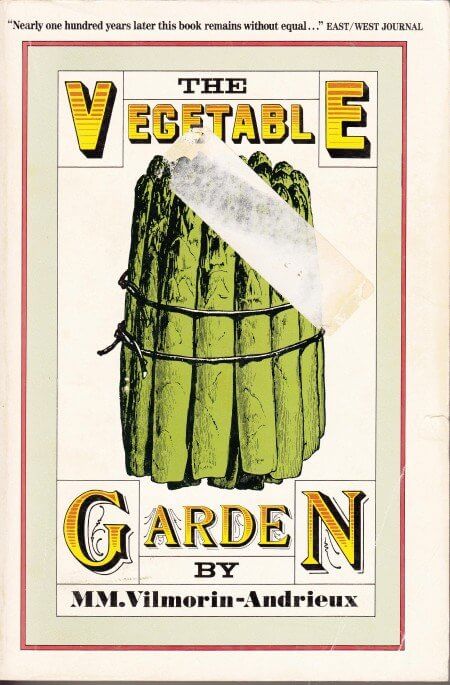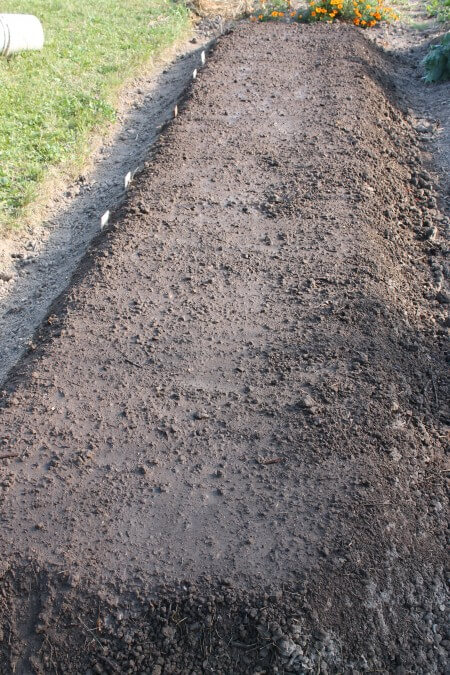Last year I had a harvest of carrots and beets that continued into December. I used a low hoop tunnel to protect the crop from frosts and freezes and the results were great. (You can read about it here). I hope to do the same this year, but I took some big chances because almost all the seed I used was really old.
As most gardeners know, seeds do have a shelf life. In spite of the stories of seeds germinating after being unearthed in an ancient Egyptian tomb or some Stonehenge like burial site, most seeds lose their viability or germinating power quickly and are usually good for only a few years. I’m not storing my seed in air tight containers or at controlled temperatures so I’m not helping the longevity. Nevertheless, I’ve often been surprised at how long seeds do retain some percentage of viability. Since I had some old seed in large quantities, I thought it wouldn’t be that big a risk to give it a try as long as I just sowed heavily.
There are many sources that will give you approximate germinating life of vegetable seeds, but my favorite reference is The Vegetable Garden by MM. Vilmorin-Andrieux, a reprint of an English edition book published by a Paris seed producer in 1885. This wonderful book lists, with hand drawn illustrations, hundreds of what would today be called heirloom vegetables, the most of which have been lost to modernity, but amazingly, many are still available.
At the back of the book is a table titled: A TABLE Showing the Comparative Weight and Size of the Seeds of Kitchen-Garden Plants, and also, the Average and Extreme Periods of Duration of their Germinating Power. Carrots, for example, are shown to weigh 360 Grammes per Litre of Seed and have 950 Seeds per Gramme. Their Average Duration of Germinating Power is 4 or 5 years, but at the Extreme they can last beyond 10 years.
I planted carrot seed from packs dated 2005, 2009, and 2011. I think they’ll do okay. Beets are cited to have an average life of 6 years, but again, they can last beyond 10 years. My seeds were from 2005 and 2007, I planted them thickly, and again, I think I’ll be happy. I planted turnip seed from 2005. I’m pretty sure it has a good chance.
The only seed that I think could totally fail is the onion I planted as scallions or bunching onions. Onion seeds are given an average life of 2 years with 7 years being listed as their extreme germination. I took two packets of onions, one dated 2005 and one dated 2008 and mixed them up with a couple new very small packets dated 2012 and 2013. Since I’m not growing for bulbs but only to get some green onions, I’m hoping enough will sprout to give us at least a few.
It’s all in the ground and watered. We’ll soon know if we’ll have enough seeds sprouting to make the experiment worth while. Over the next couple days I’ll plant another bed of greens, lettuces, radish, spinach and collards. That will all be with relatively current model years of seed so my risk there will be very low.
As an aside to the mention of the Vilmorin-Andrieux book, which is relatively well known, the whole layout and style of their book was lifted or “borrowed” from a more obscure American book first published in 1863 titled The Field and Garden Vegetables of America: Containing Full Descriptions of Nearly Eleven Hundred Species and Varieties; with Directions for Propagation, Culture, and Use, by Fearing Burr.
Imagine a listing of eleven hundred different varieties of vegetables available to gardeners in 1863 and it’s easier to realize the true loss of diversity in seeds that has been occurring. The catalog today is unfortunately much smaller. It’s a good reason to both save seeds and to support the smaller seed producers who are trying to maintain the old varieties.




You can check your seed germination rate, by selecting about 10 seeds of which ever variety you find questionable. Take a sheet of paper towels, dampen the towel (wet and wring out well). Lay your seeds in a line on the towel. Roll it up and set in a warm place. I use the top of my refrigerator. Check every couple days for germination. The more seeds that germinate the more viable they are. Any 3 or less discard. It’s very easy to store your seed in a cool dry place. I’m a little ODC so mine are in envelopes, and alphabetically filed in a clear plastic shoe box. Which is tucked in the bottom back corner of my fridge. I label the envelopes with planting instructions, date to maturity etc. including when they were harvested, as I save much of my seed for replanting.
Thanks for this. I’m actually a little less careless with my seed than the post may have indicated, but I have too much to store in the refrigerator. Our good friends who run a CSA use the germination check you have outlined and I know it works well.
.
.